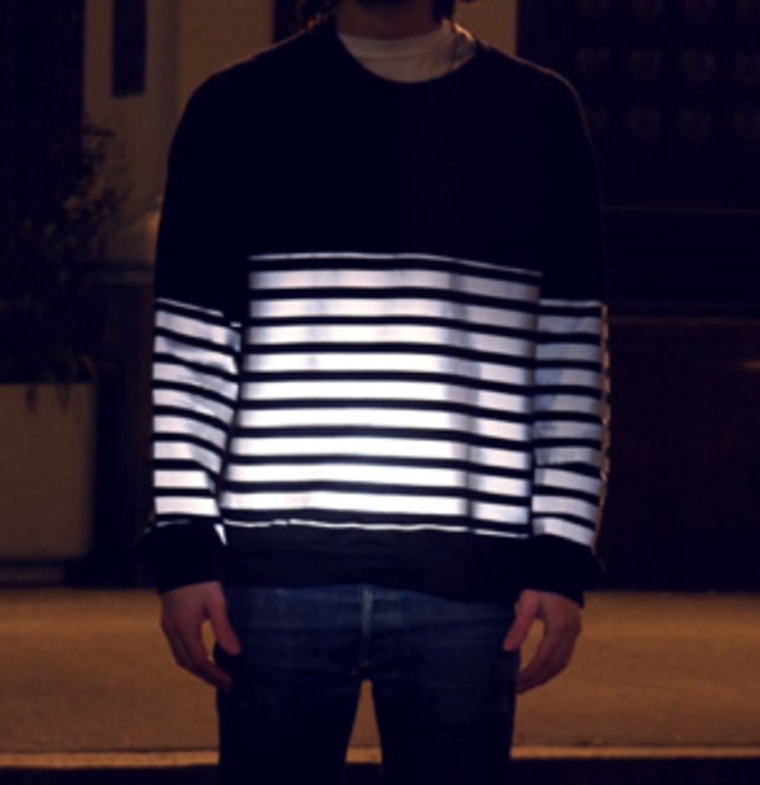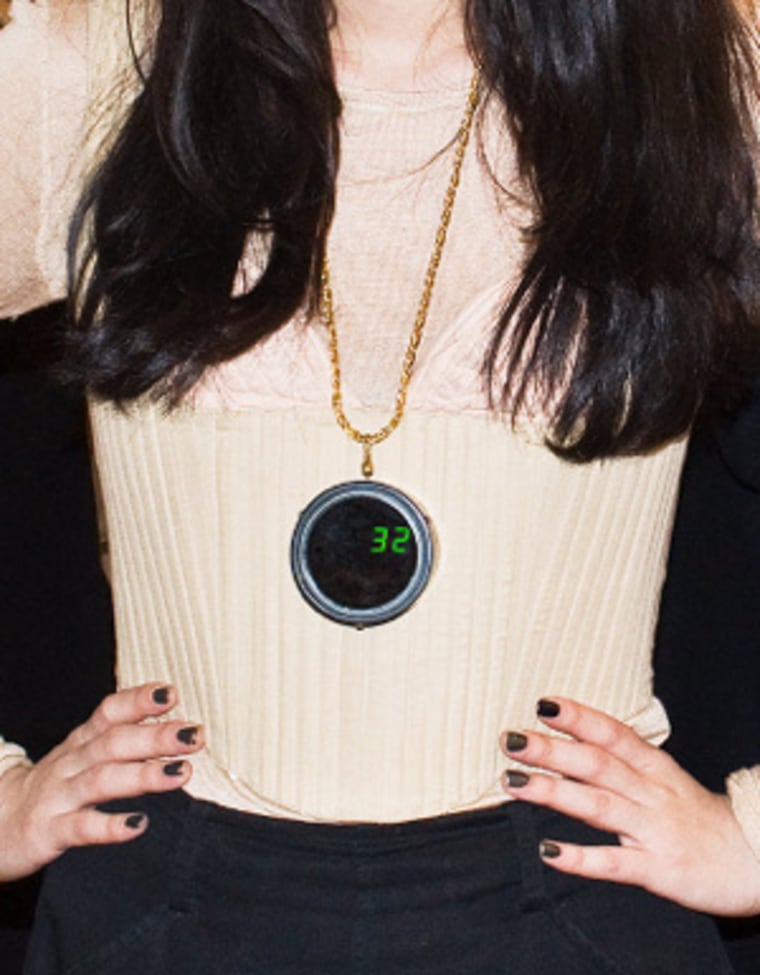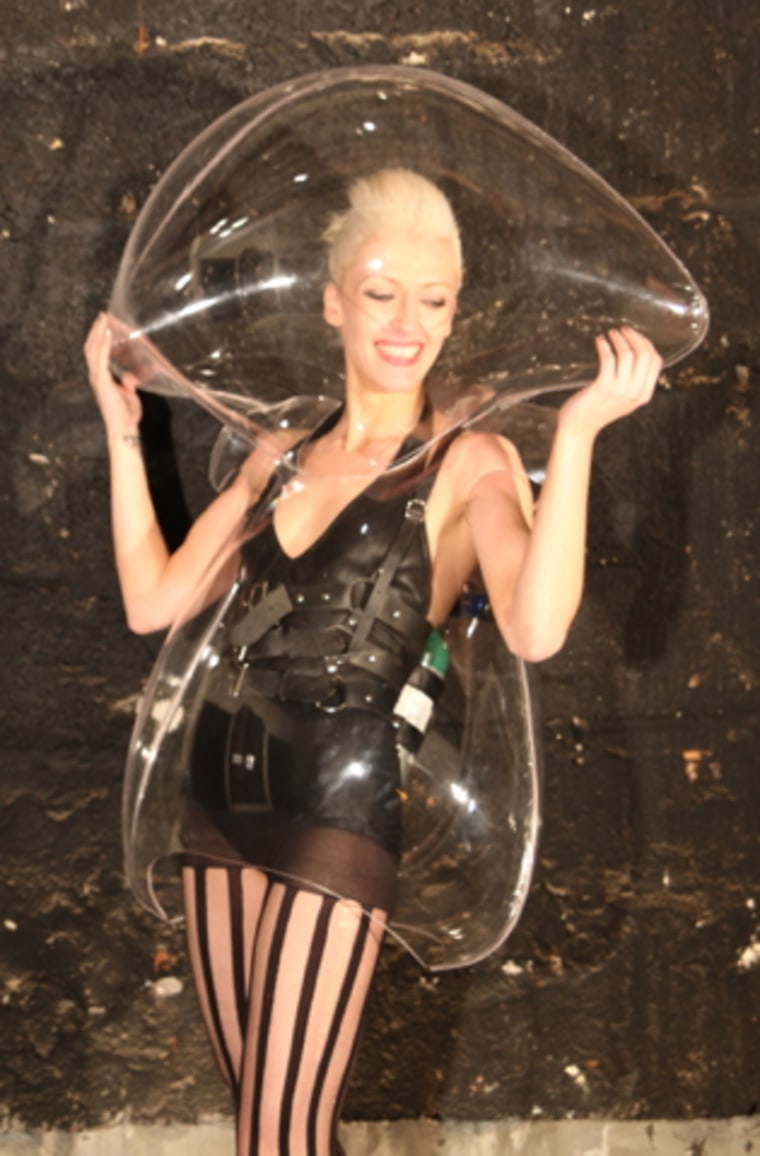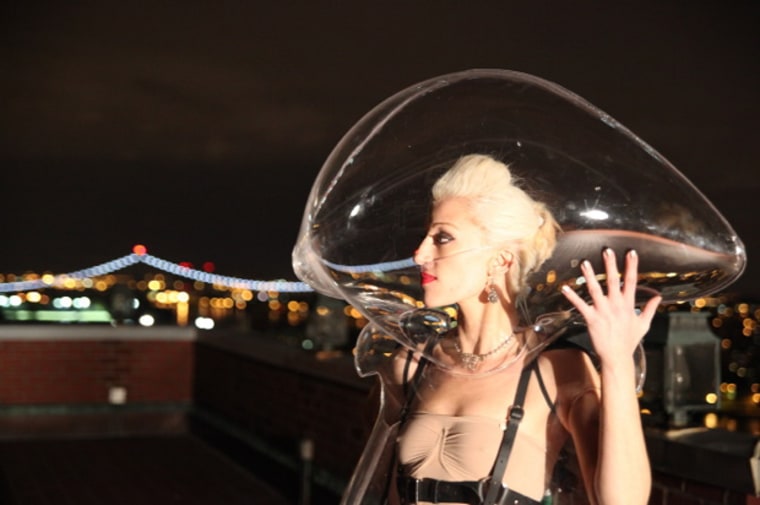"Wearable technology." The phrase is almost as cumbersome as the thing it describes, evoking goofy images of sci-fi from the '80s: the "Ghostbusters'" proton pack, those ridiculous glasses in "Star Trek: The Next Generation." There's a sense in which wearable technology fits within the most esoteric realms of haute couture: so hideous it's hip, and so hip it's hideous. Whatever motivates its makers, one thing is certain: Wearable technology has long seemed incredibly impractical.
Until now. Increasingly, members of the wearable tech community are beginning to think of ways their creations can not only be eye-popping but how they can also be useful. And in the process, they might just stumble on a sizable, untapped market.
Take, for instance, the work of Alex Vessels & Mindy Tchieu. A little while back, the two of them, students at NYU's Tisch ITP (Interactive Telecommunications Program), had a problem. They were both casual cyclists in New York, but like many casual cyclists in New York, they feared for their lives. They were tempted to wear reflective safety vests, as some do, but this being New York, they weren't willing to make such a sartorial concession. Figuring there surely had to be a company that had solved this problem by making stylish garments with reflective material embedded in them, they searched for one. They couldn't find one, and thus We-Flashy was born.

"It seemed like kind of an obvious thing," Vessels told Fast Company at an event called Geekdown on Saturday at 92YTribeca in Manhattan. (The event showcased the work of ITP students and others who bridged technology and creativity; elsewhere in the room was a cabinet that made music when you opened its drawers, and milled aluminum blocks with a speech module that is counting up to a billion.)
At least 181 visitors to We-Flashy's Kickstarter page agreed with Vessels, having propelled We-Flashy well over its $6,500 funding goal, funding it with $10,616 in June. We-Flashy's designs, which incorporate a retroreflective material integrated into the fabric of the shirt, will light up like daylight if a car's headlights catch them. Most importantly (again, to New Yorkers, and other cyclists in fashion-forward cities), they're not ugly. In fact, they're downright stylish. Rather than aligning the material in dull strips, as on those traffic cop vests, Vessels and Tchieu have made elegant, off-kilter designs: there's the houndstooth, a classic textile pattern, or a unicorn tessellation design, or a nautical one, with horizontal stripes.
Stores as far afield as New Zealand have contacted We-Flashy to ask about their price list. Suffice it to say they're selling better than another Vessels project, ciabatta shoes.
The key to We-Flashy's success may be the broad definition it took of "technology" — Vessels said he wasn't ready to start wearing wires and batteries. But other projects in the gallery space at Geekdown ventured into those more sci-fi realms. Adam Harvey's DLC (data logging for celebrities) necklace helps a celebrity keep track of how popular he or she is with the paparazzi.

The necklace detects a camera's flash, increasing the number on a digital counter with each instance. As Harvey explains on Geekdown's site, the necklace has two charging modes. The "beginner" mode simply uses a USB cable to charge the phone. When in "superstar" mode, though, the necklace charges using a solar cell that draws a modicum of energy from each snapshot's flash.
A pair of projects used wearable technology to convey an environmental message. "Warning Signs," by Sue Ngo and Nien Lam, were simple garments with stitched-on organs that change color and pattern when exposed to carbon monoxide. A work called "8" by Hana Newman went even further. It envisions a future that is so polluted, the wealthy will choose to walk around in protective oxygen bubbles — and will want to look stylish while they do it.

"'8' is a personalized air service option for fashionable women who are concerned about the air they breathe," Newman told me, with a remarkably straight face. Her influences ranged from Lady Gaga to the work of UC Santa Cruz sociologist Andrew Szasz, who has put forth the notion of "inverted quarantine," as part of a criticism of what he sees as a failed environmental movement that, in prizing personal safety, has neglected the commons.
When I asked Newman about the future of wearable technology, she looked around the room. "I think the future of wearable tech is that it's less about awareness, or about collecting data. It's about activating people to make changes, to make choices." Much as any artist is protective of their own work, for everyone's sake Newman hopes our future isn't populated with ladies wearing fine dresses like "8," but rather dresses like these developed at the University of Sheffield, which contain catalytic converters purifying the air around them.
Though "8" was fundamentally a work of conceptual art, Newman has worked on more practical projects as well, helping design the garment that participants will wear in a Columbia University study on indoor air quality, for instance. The hope is to make a garment that, like We-Flashy's, is stylish and comfortable enough that children participating in the study will wear them religiously for a five-day period. Previous iterations of the study had used an ugly vest that, predictably, the kids sloughed off.
And that, in the end, epitomizes the frontier that wearable technology is now crossing. It sounds almost idiotic to say it, but for wearable technology to really take off, it must be wearable; that is to say, stylish, lightweight and "flashy" only when a car is approaching. If wearable technology finally arrives, it will be because the creative minds behind it finally made it unlike the proton packs or futuristic glasses whose images currently dominate the mind. We don't want to wear computers. We want to wear clothes.
Related stories:
